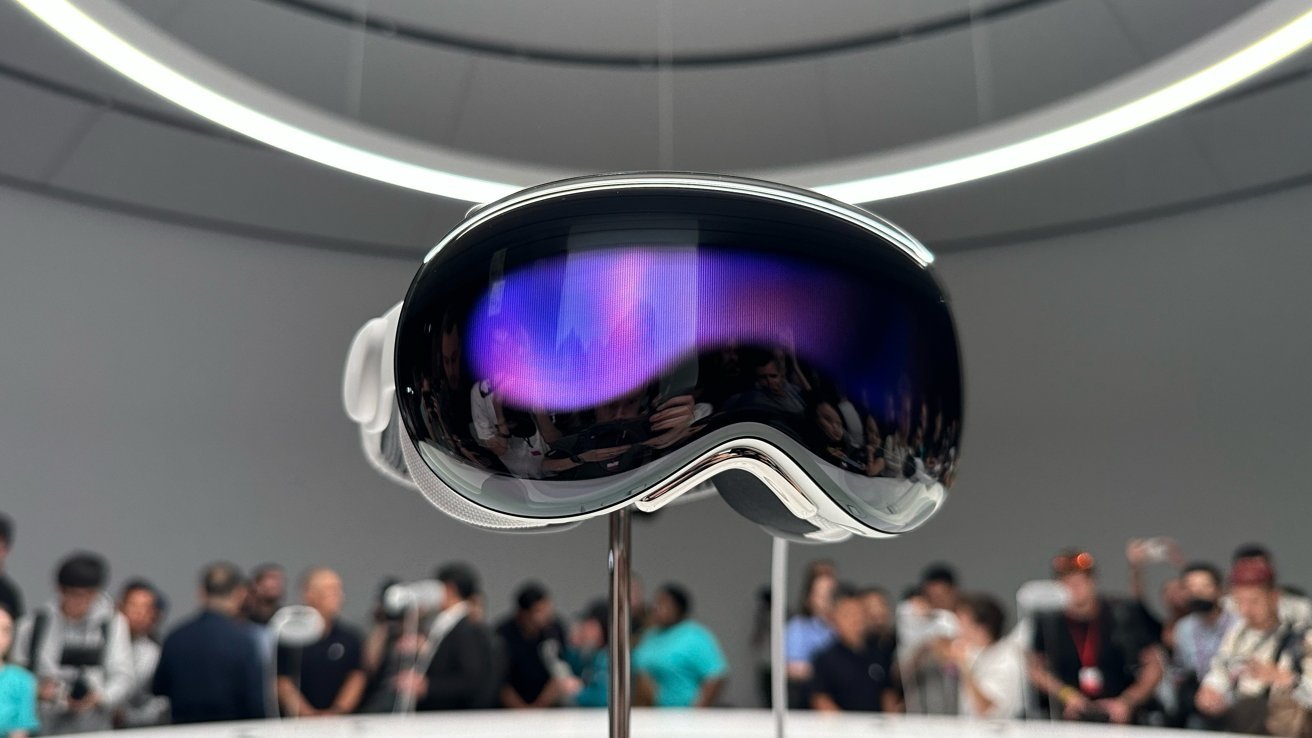
How Apple Vision Pro will try to fight off motion sickness
The Apple Vision Pro will help minimize instances of motion sickness with brute force, a professor of spatial computing believes, with Apple’s high-specification headset relying on extreme performance to do it.
Apple’s mixed-reality headset is a powerful processing device, designed to give users as lag-free an experience as possible. It’s this high level of performance that should help reduce instances of motion sickness or nausea, and a professor specializing in the field agrees with that sentiment.
According to AI and spatial computing professor David Reid of the Liverpool Hope University speaking to BBC Science Focus, the standout element of the headset compared to others on the market is its use of two separate chipsets. With one used for processing graphics, vision algorithms, and running applications, the second focuses just on processing camera feeds, sensor inputs, and audio from microphones.
During the launch, Apple said it enables for a response time of just 12 milliseconds, virtually cutting out lag and providing a more natural view of the world. Professor Reid is positive on Apple’s system to defeat motion sickness, but admits it’s a brute force way to solve the problem.
“It’s better, but it still isn’t ideal” as a solution to motion sickness, Reid explains. “The main problem with virtual reality motion sickness is vergence-accommodation conflict (VAC).”
VAC refers to how a user’s brain is provided with mismatching cues between distances of a virtual object from the user in the virtual world, and what distance the user’s eyes should focus to in order to see it properly. This is a problem for VR headsets, since they have to manage the user’s vision over a very short distance to near-eye displays.
“Apple has tried to reduce the motion sickness as much as possible,” Reid adds. “By reducing lag and delay, and using high-quality displays, Apple has made a headset that is best in class in terms of motion sickness.”
Pro performance capabilities
Reid sums up the performance of the Apple Vision Pro as being “more powerful than a MacBook Pro. It’s basically a computer strapped to your face.” The professor reckons the setup will mean “lots of new applications and new ways to not just play games, but to work, socialize, and even just browse the internet.”
“You’ll be able to do things as creatives and professionals that you can’t do on conventional computers,” Reid continues. Its cost will make it usable only by early adopters, but it will eventually get cheaper and more readily available, and eventually “Apple will be leading the way for virtual reality.”
On the 12 cameras and five sensors included in the Apple Vision Pro, the professor adds that this too is a “complicated tracking system” that “requires a huge amount of processing power, but Apple has managed to implement that.”
“That would be impressive enough, but Apple then added in a whole host of other high-end features on top.”
Professor Reid’s comments occur just weeks after Apple’s introduction of the Apple Vision Pro, and months ahead of its eventual release in the United States. While the initial device will be costly at $3,499, it’s likely that future devices in the product line will be more consumer-oriented in cost, more modest in its capabilities, and with any early-release foibles and issues refined.

